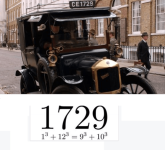I hate blue LEDs. They're so shouty. LOOK AT ME! STOP LISTENING TO STUFF! I get enough blue light trying to tell my brain it's dawn from looking at frickin phones and computers all day.
What's wrong with a nice gentle green glow, that's what I want to know.
What's wrong with a nice gentle green glow, that's what I want to know.
It's all a matter of personal preference. I like the blue LEDs, maybe because they're a nice change after only seeing red/green/yellow for 45 years.
My last two amp projects have no LEDs at all. Never turn them off, so what's the point. Power switch on the rear and the front panel is blank.
Then I built a pre-amp with a blue power LED and a 10-turn pot so I can get the intensity just right. Go figure.
My last two amp projects have no LEDs at all. Never turn them off, so what's the point. Power switch on the rear and the front panel is blank.
Then I built a pre-amp with a blue power LED and a 10-turn pot so I can get the intensity just right. Go figure.
My mood was considerably lightened by finding an INTERESTING PROBLEM in this thread!Step 1. Find an online "bignum calculator" which can do integer arithmetic using integers with hundreds of digits. I happen to prefer (this one) but there are dozens to choose from; Google finds them easily. If you have Linux, try the "bc" program.
Step 2. ask it to multiply 123123123123123123 times 37. That's just a whole lot of repetitions of "123" , times thirty seven.
Step 3. Marvel at the result.
Step 4. Repeat with 456456456456456 times 37
Step 5. Repeat with 789789789789789 times 37
Step 6. Explain.
As resident Number Theorist at diyaudio, I felt I can crack this one easily. I was disappointed by some of the alledged solutions TBH. 10 and 42 don't cut it.
Paper and pencil and a competent scientific calculator along with a table of Prime Numbers, No need for even a pair of compasses and a straight edge since a numerical solution will suffice, though a Geometrical solution might be interesting.
Firstly simplify the problem. This is accomplished by expressing the numbers between 0 and 1, which is much more modest calculator friendly and needs no recourse to Lunix calculators.
a = 0.123123123123123...
b = 0.456456456456456...
c = 0.789789789789789...
Any recurring decimal is a rational number, as a Child of Ten knows. Thus expressible as a fraction.
The second obvious trick here is to multiply by 1000.
Thus 1000a = 123.123123123...
Now subtract a, and we get 999a = 123
Thus a = 123/999
and b = 456/999
and c = 789/999
At this point a knowledge of Prime Numbers is required to find the simplest Prime Factorisation.
123 = 3 X 41
456 = 2 x 2 x2 x 3 x 19
789 = 3 x 263
999 = 3 x 3 x 3 x 37
The rest, as they say, is just technique.
37a = 41/9 = 4.5555555555...
37b = 152/9 = 16.88888888...
37c = 263/9 = 29.22222222...
QED (Quod Erat Demonstrandum). 🙂
The matter of Blue versus Red LEDs in electronic equipment is also easily solved. Blue lights keep you awake at Night, Red ones don't.
This is because your body is accustomed to red light as meaning sunset and beddie-byes, and blue light meaning dawn and leap out of bed. Thus blue lights muck up your circadian rythyms, and keep you awake at night.
I am surprised amplifier genius Nelson Pass doesn't know this. 🙁
Last edited:
My Rotel CD player has a blue LED, plus one that lights up whilst playing a HDCD, but not having any HDCDs you tend to forget. So in went an new CD, I was playing them in the dark, and I genuinely thought that I had developed double vision.
Hi,My mood was considerably lightened by finding an INTERESTING PROBLEM in this thread!
In my modest opinion, given the easiness with which you (apparently, because what do I know?) solved that problem it seems that you liked more to show that you know how to solve it rather than doing it itself, but of course there is nothing wrong with this, as we all have an ego to give into account and at my age I know that it works this way. 😉
So I just tell you that I really liked your solving! 😎
And it will still not be enough, and do you want to know why?38 knobs 11 settings gives 23,303,666,937,424,000,000,000,000,000,000,000,000,000,000,000,000,000,000,000 different settings or 2.33 vigintillion
Because there is no match between 1 possibility on "I don't know"... 😵
The point IMHO is all in that apparently innocent "I don't know", and there is no Higher Arithmetics who can help us "against" that. 🙄
Ask ANY woman having an argument with you - “I don’t know” is NOT a valid answer. Try it sometime and see how far you get.
I don't say it, it is she who thought it (but then she says what passes through the mind at that moment, and never later)! 😳
P. S.: If English was my first language I would say it much better... 😉
P. S.: If English was my first language I would say it much better... 😉
System 7
You need to google 10 & 42 to learn what they mean. Obviously beyond your current ken.
You need to google 10 & 42 to learn what they mean. Obviously beyond your current ken.
Since we're in the math department I will recommend this movie.
I'm amazed how very few people have such abilitys, and apparently without any education, it's nothing short of a miracle.
imdb.com
https://www.imdb.com › title
The Man Who Knew Infinity (2015) - IMDb
I'm amazed how very few people have such abilitys, and apparently without any education, it's nothing short of a miracle.
imdb.com
https://www.imdb.com › title
The Man Who Knew Infinity (2015) - IMDb
The Man Who Knew Infinity
Call me a cab!
Attachments
And a Happy Pi Day to all!
Attachments
- Home
- Member Areas
- The Lounge
- Something to lighten the mood

